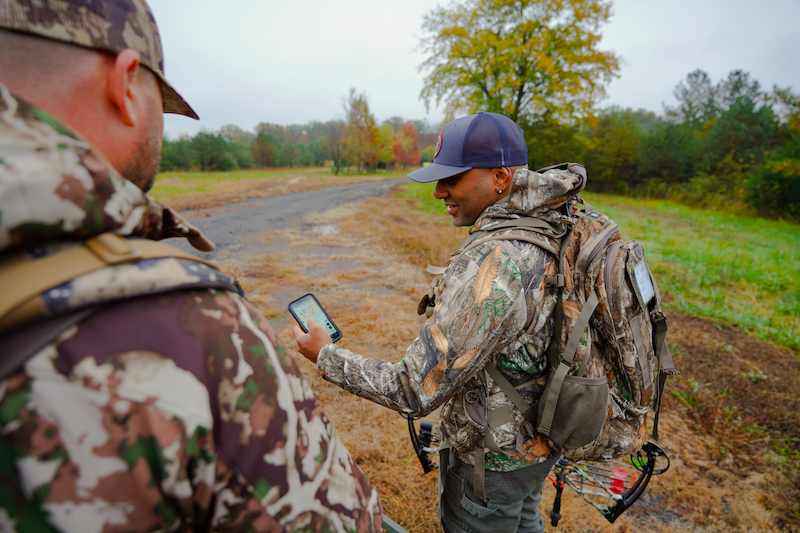If you’re scrambling to fill your deer tag before bow season ends, get more creative. These aggressive tactics might just help you put venison in the freezer.
Much like a deer drive, a “wind bump” involves a group of walkers to get deer moving, and some standers overlooking trails deer use when fleeing the walkers. As the name suggests, the walkers execute a wind bump by quietly sneaking through the upwind side of a bedding area. As their wind drifts through the cover, bedded deer sneak away. Rather than running away from the shouts and breaking sticks common to drives, deer skulk away as if gently nudged, providing more controlled shooting opportunities.
Food rules late-season deer, but popular feeding sites can be tricky to hunt because of the vast size of corn and soybean fields. When deer enter large fields, they typically head for the middle to separate themselves from field edges where predators might lurk in thick cover. Slip into a ghillie suit and brush yourself into more limited cover such as field terraces or drainage ditches. These can be great places to hide as deer gorge on late-season carbohydrates. Just be sure to scout the field first to ensure your ambush site is within bow range.

Take the time to scout deer sign so that you’re making the most of your hunt. Photo Credit: ATA
When you have limited time for stand hunting, invest in sites with the highest likelihood of encountering deer within bow range. Identify these honey holes by scouting twice as much as you hunt. Scour your hunting area for lots of fresh tracks, scat and beds. By focusing on these areas for the season’s last few sits, you’re setting yourself up for success.
Fresh snow unlocks the cheat codes for locating deer. Start by pinpointing the best food source in your area, and then search for tracks. Late-season deer have been pressured for months by other hunters, so you can assume most tracks in open feeding areas were made at night. Learn where deer bed during daylight by backtracking trails. You might even bump or spook a deer in the process, but don’t worry. That’s where deer feel most comfortable, and they’ll be back. Return to the area when wind and weather conditions favor you, and don’t leave your deer cart at home.
Trail cameras are the most efficient way to scout lots of ground quickly. Cellular trail cameras that send photos to your smartphone increase your efficiency, but traditional trail cameras are also helpful. Position your cameras where you can check them often and easily without spooking deer. When deer you want to target show behavior patterns, hunt the site as soon as possible. Through low-pressure scouting, you’ll boost your odds of encountering a specific whitetail during shooting hours.
The late season is a challenging time to arrow deer, but several tactics can help you meet your goals. Strategies that worked earlier in the season often become irrelevant once deer feel pressured, so adapt and try something new.
Don’t wait to craft a last-ditch game plan. The clock is ticking on your bowhunting season. It’s time to get to work.